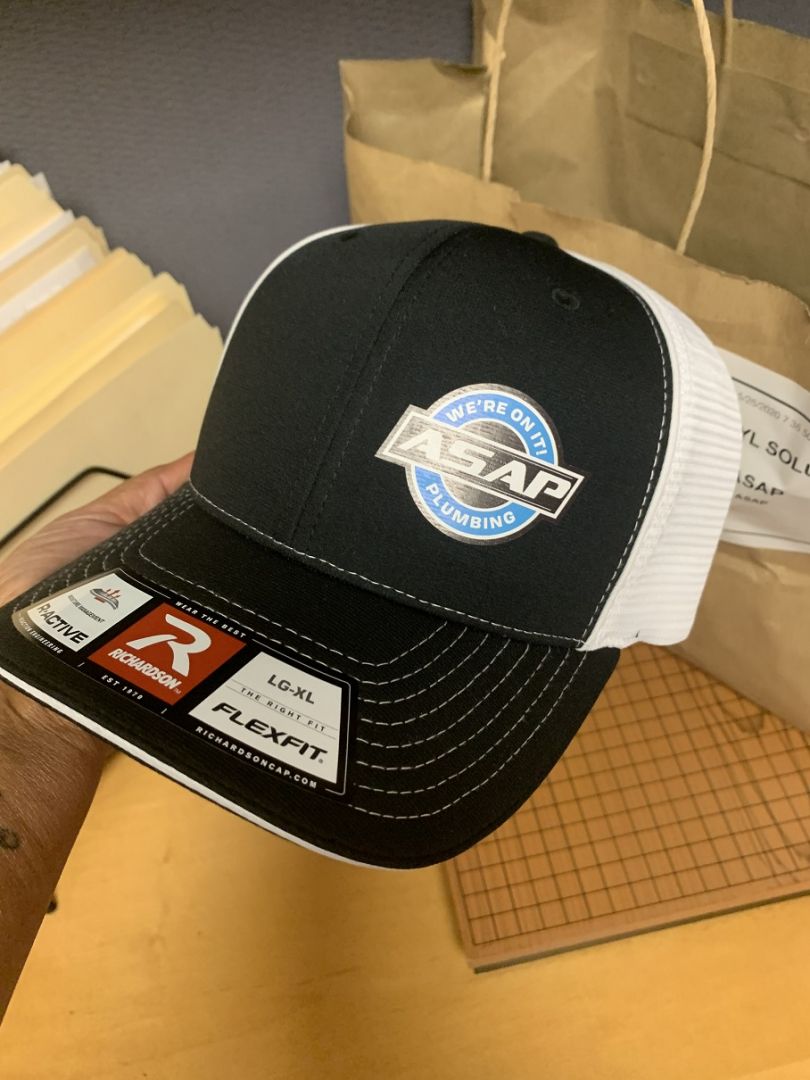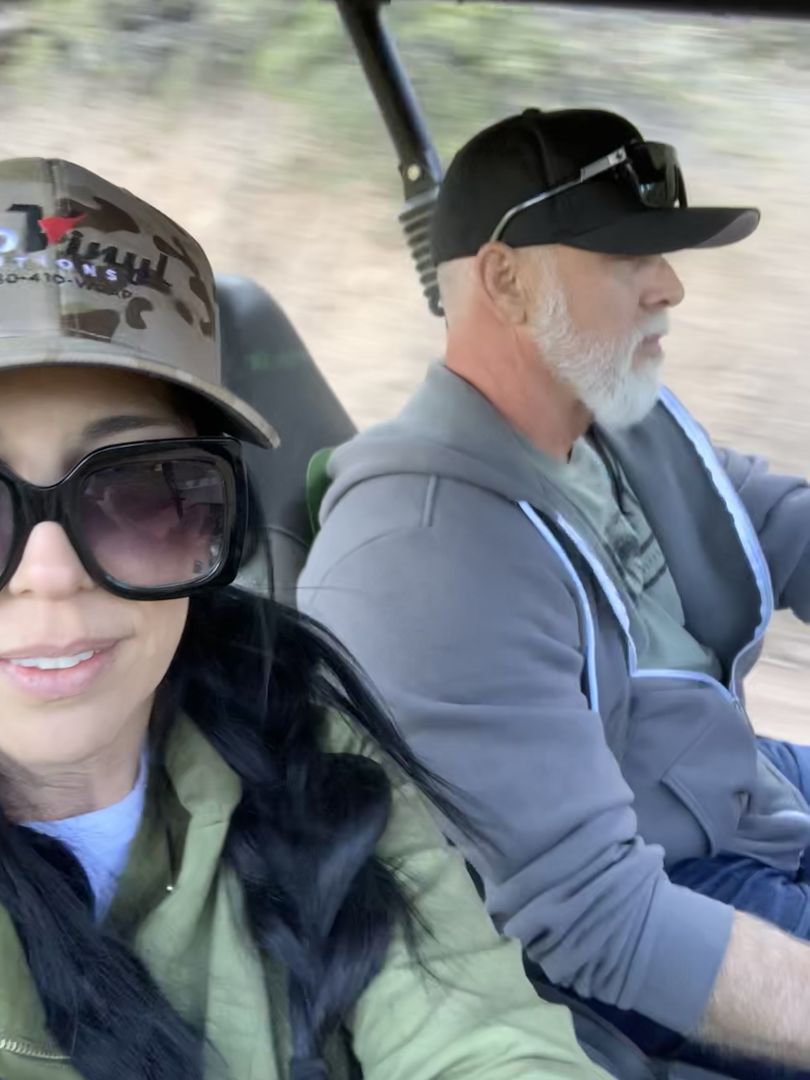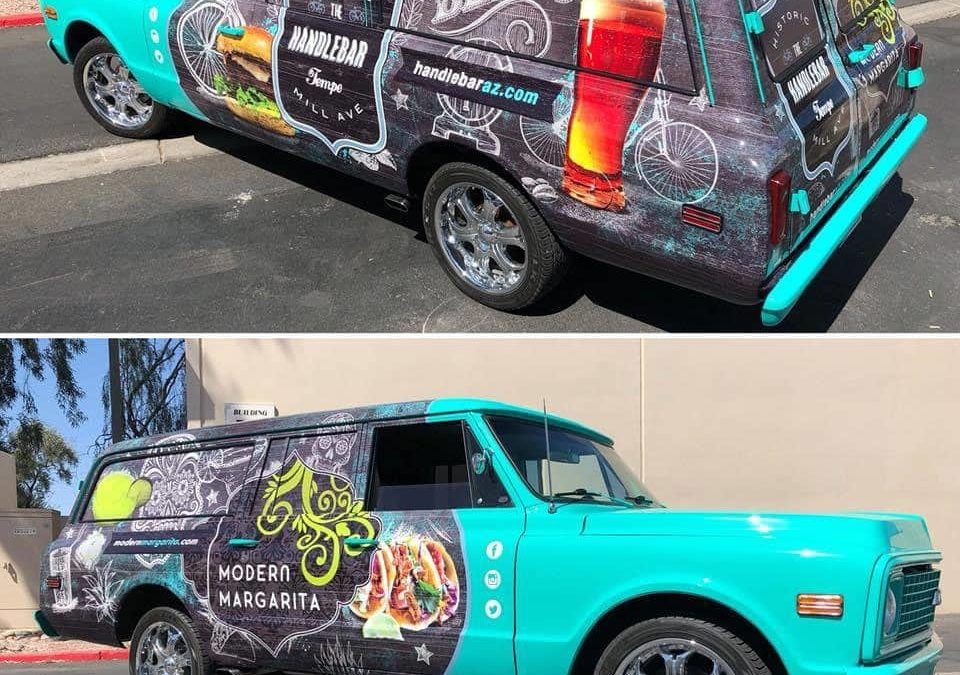Introduction to Vehicle Wraps
Vehicle wraps are a dynamic and prominent form of advertising that covers a car, truck, or any other type of vehicle with a vinyl graphic or decal. This method transforms ordinary cars into mobile billboards, capturing the attention of pedestrians and drivers alike. The effectiveness of vehicle wraps lies in their ability to reach a broad audience non-intrusively, making them a popular choice for businesses seeking to boost brand visibility. With their customizable nature and striking visual appeal, vehicle wraps protect the vehicle’s surface and are a powerful marketing tool in today’s fast-paced world.
Essential Pre-Design Considerations
Before diving into the creative process of designing a vehicle wrap, specific essential pre-design steps must be meticulously followed to ensure the final product is aesthetically pleasing and functionally sound. The cornerstone of this preparatory phase is sizing up the job and taking comprehensive photos of the vehicle. This involves thoroughly examining the vehicle’s dimensions, contours, and unique features. Photographing the car from multiple angles provides an invaluable real-world reference during the design process. These images should capture the sides, hood, rear, roof, and bumpers, offering a complete view of the vehicle’s surface.
Equally important is the need to physically inspect the vehicle rather than relying solely on digital templates. While templates offer a basic outline and a starting point, they often lack the nuances and specific details of the actual vehicle. Custom modifications, bodywork irregularities, and unique curves or angles can significantly impact the wrap’s design and installation. By physically examining the car, designers can anticipate potential challenges and tailor their designs to accommodate specific features, ensuring a seamless and effective wrap. This hands-on approach not only aids in accurate measurement and scaling but also helps visualize the final product, leading to a practical and visually compelling design.
Design Principles for Vehicle Wraps
Designing a vehicle wrap is an art that blends creativity with strategic planning. When executed correctly, it can turn a simple vehicle into a striking piece of mobile advertising. Here are some fundamental principles to consider when designing a vehicle wrap.
Using Bold Colors and Designs
The primary goal of a vehicle wrap is to catch the eye of as many people as possible. Bold colors and designs play a crucial role in achieving this. Bright, vibrant colors tend to stand out in the urban landscape, making the vehicle more noticeable. When selecting colors, it’s essential to consider color psychology and how different colors can evoke different emotions. For instance, red can signify energy and urgency, while blue can convey trust and stability.
Designs should be more than just colorful; they need to be dynamic. This could mean incorporating large, impactful graphics, creative patterns, or optical illusions. The design should be such that it makes heads turn, ensuring that the vehicle makes a lasting impression as it moves through the streets.
Balancing Eye-Catching Elements with Simplicity
While the design must be bold and eye-catching, there’s a fine line between an engaging design and an overly busy or cluttered one. A design that is too complicated can be challenging to understand, especially when the vehicle is in motion. The key is to strike a balance – the design should be simple enough to be understood at a glance but dynamic enough to be memorable.
This balance can be achieved by focusing on a few critical elements of the design, such as a striking logo, a few words of text, or a central image, and allowing plenty of space around these elements. This approach ensures that the central message of the wrap is clear and that additional design elements don’t detract from this message.
Focusing on the Client’s Brand and Message
Ultimately, the vehicle wrap should reflect the client’s brand identity and message. Every design aspect should align with the client’s branding, from the color scheme to the imagery used. This ensures consistency across all marketing materials and strengthens brand recognition.
The message conveyed through the wrap should be concise and clear. The message should be easily digestible since the audience has only a few seconds to view the wrap. This might be the brand’s tagline, a call to action, or a web address. The font used for any text should be legible, even from a distance, and the overall design should complement, not overshadow the message.
In conclusion, designing an effective vehicle wrap requires a thoughtful approach that balances boldness and simplicity while staying true to the client’s brand and message. By adhering to these principles, designers can create vehicle wraps that are visually stunning and effective in conveying the intended message to a broad audience.
Advanced Design Techniques
Staying ahead of the curve with innovative ideas and trends in vehicle wrap design is critical to creating memorable and practical designs. Advanced design techniques set a vehicle apart and enhance brand recognition and message delivery.
Embracing Innovative Design Ideas
Innovation in vehicle wrap design often involves experimenting with textures, 3D graphics, and interactive elements. For instance, using a matte finish on certain wrap parts can create a contrast with glossy elements, adding depth and interest. Incorporating 3D graphics can give the illusion of parts of the vehicle being something else entirely, like transforming a van into a giant product package. Some designers are even exploring augmented reality elements, where parts of the wrap come to life when viewed through a smartphone app.
Following Current Trends
Staying abreast of current design trends is crucial. This could include color trends, typographic styles, or thematic elements popular in broader design communities. For example, minimalist designs with bold, sans-serif typography are currently in vogue. Similarly, incorporating street art or graffiti elements can give a wrap a contemporary and edgy feel.
Making Designs Memorable and Effective
The key to making a vehicle wrap memorable and effective is its ability to tell a story or evoke an emotion. This could be achieved through striking imagery, clever wordplay, or humor. The design should connect with the viewer, making it more than a moving advertisement.
Additionally, the effectiveness of a design is often measured by its clarity and ability to communicate the intended message quickly. This means prioritizing readability and viewer comprehension, ensuring the critical message or brand is instantly recognizable.
In conclusion, advanced design techniques in vehicle wraps involve a blend of innovation, trend awareness, and a deep understanding of storytelling and emotional engagement. By leveraging these techniques, designers can create wraps that are not only visually stunning but also leave a lasting impression on the audience.
Copy and Content Considerations
The adage “less is more” holds particularly true in vehicle wrap advertising. The effectiveness of a vehicle wrap largely depends on its ability to communicate a message quickly and clearly. This is where the art of crafting minimal yet impactful advertising copy comes into play.
Minimal and Impactful Copy
The key to a successful vehicle wrap copy is brevity and clarity. Viewers often have only a few seconds to absorb the message, so the text should be concise and to the point. This means prioritizing essential information like the brand name, tagline, contact details, or a call to action. Overloading the wrap with too much text or complex messages can lead to confusion or disinterest. Instead, focus on a simple, strong statement or question that resonates with the target audience and reinforces the brand identity.
Choosing the Right Words and Visuals
The choice of words and visuals must align with the brand’s tone and message. Words should be robust and evocative, instantly connecting with the viewer. The font style and size should enhance readability, especially from a distance and at varying speeds.
Visuals play a crucial role in complementing the text. They should be striking and relevant, capable of conveying or supporting the message without overwhelming it. Brand colors, logos, and imagery should be strategic, ensuring that they contribute to the overall impact of the wrap without cluttering the design.
In conclusion, the goal of vehicle wrap copy and content is to make every word and image count. By keeping the advertising copy minimal and impactful and carefully selecting words and visuals suited for brief exposure, a vehicle wrap can effectively capture attention and communicate its message in fleeting moments with its audience.
Conclusion
The art of designing an eye-catching vehicle wrap is a blend of creativity, strategy, and technical know-how. As we’ve explored, effective vehicle wrap design is not just about making a vehicle look attractive; it’s about creating a moving billboard that captures attention and conveys a message succinctly and memorably. The key takeaways from our discussion emphasize the importance of understanding the vehicle’s physical attributes, the client’s brand identity, and the target audience’s perceptions.
Firstly, the pre-design phase, including thorough vehicle inspection and photography, lays the groundwork for a design that fits perfectly and looks seamless. The use of bold colors and designs, balanced with simplicity, ensures that the wrap is eye-catching yet clear in its message. Advanced design techniques, such as incorporating innovative ideas and current trends, can make a wrap stand out and resonate with viewers.
Moreover, the significance of minimal and impactful copy cannot be overstated. In the brief moment that a viewer has to interact with a vehicle wrap, every word and image must contribute to the overall message and brand recognition.
In conclusion, an effective vehicle wrap is a powerful marketing tool that requires careful planning, creative design, and strategic execution. By adhering to these principles, businesses can leverage vehicle wraps not only as a means of protection for their vehicles but as a dynamic and impactful advertising medium. Designers are encouraged to push the boundaries of creativity while maintaining clarity and brand consistency, ensuring that each wrap they create is a moving masterpiece that effectively captures and communicates the intended message.



